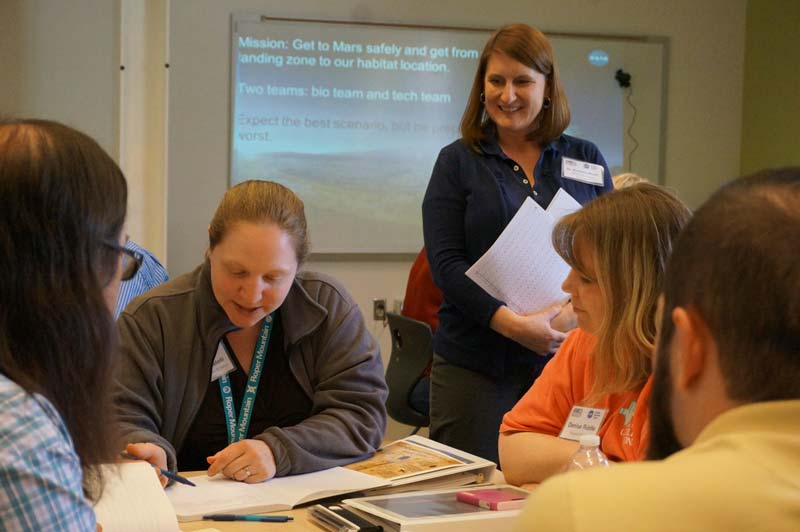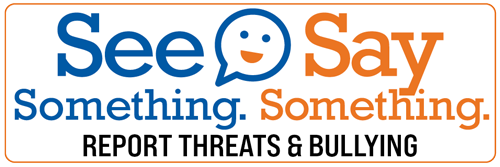Journey to Mars
 About 21 GCS educators received hands-on training in a Journey to Mars simulation from NASA Education Specialists Dr. Kimberly Brush and Rosemary Smith. Working on technology and biology teams, they brainstormed foods they would need to take on their mission, types of specialists that would be needed, and how to build and land a space module.
About 21 GCS educators received hands-on training in a Journey to Mars simulation from NASA Education Specialists Dr. Kimberly Brush and Rosemary Smith. Working on technology and biology teams, they brainstormed foods they would need to take on their mission, types of specialists that would be needed, and how to build and land a space module.
 Rosemary Smith, an education specialist at NASA Langley, explained, “We are teaching teachers how to implement classroom instruction on NASA’s Journey to Mars. We’re sharing the work we’ve already done, what we’re currently doing, and what we will do going forward. This session teaches them how to embed the knowledge we’ve learned into their curricula.”
Rosemary Smith, an education specialist at NASA Langley, explained, “We are teaching teachers how to implement classroom instruction on NASA’s Journey to Mars. We’re sharing the work we’ve already done, what we’re currently doing, and what we will do going forward. This session teaches them how to embed the knowledge we’ve learned into their curricula.”
 One unit involved how built and land the rover on Mars. Teachers watched Seven Minutes of Terror, a NASA video explaining the technical aspects of how the module travels from the top of the atmosphere down to the surface of Mars without crashing. The next step was for the teachers to use common household supplies like a Styrofoam cup, rubber bands, coffee filters, and duct tape, to build and tested their own modules.
One unit involved how built and land the rover on Mars. Teachers watched Seven Minutes of Terror, a NASA video explaining the technical aspects of how the module travels from the top of the atmosphere down to the surface of Mars without crashing. The next step was for the teachers to use common household supplies like a Styrofoam cup, rubber bands, coffee filters, and duct tape, to build and tested their own modules.
 “I absolutely love anything dealing with space,” explained Bryson Middle School science teacher Jeremy Puskas. “I’ve always wanted to be an astronaut, and I try to bring that passion to students who have that same dream.” Puskas plans to introduce the NASA astronomy lesson and activities to his students immediately after PASS testing.
“I absolutely love anything dealing with space,” explained Bryson Middle School science teacher Jeremy Puskas. “I’ve always wanted to be an astronaut, and I try to bring that passion to students who have that same dream.” Puskas plans to introduce the NASA astronomy lesson and activities to his students immediately after PASS testing.
 Dr. Kimberly Brush, NASA Education Specialist, said the goal of the teacher training is to provide real-world applications in the classroom and opportunities for students to learn more about science, math and technology. “Schools can compete in NASA engineering design challenges where they are learning content tied directly to skills they’ll need in the workforce,” she said.
Dr. Kimberly Brush, NASA Education Specialist, said the goal of the teacher training is to provide real-world applications in the classroom and opportunities for students to learn more about science, math and technology. “Schools can compete in NASA engineering design challenges where they are learning content tied directly to skills they’ll need in the workforce,” she said.


